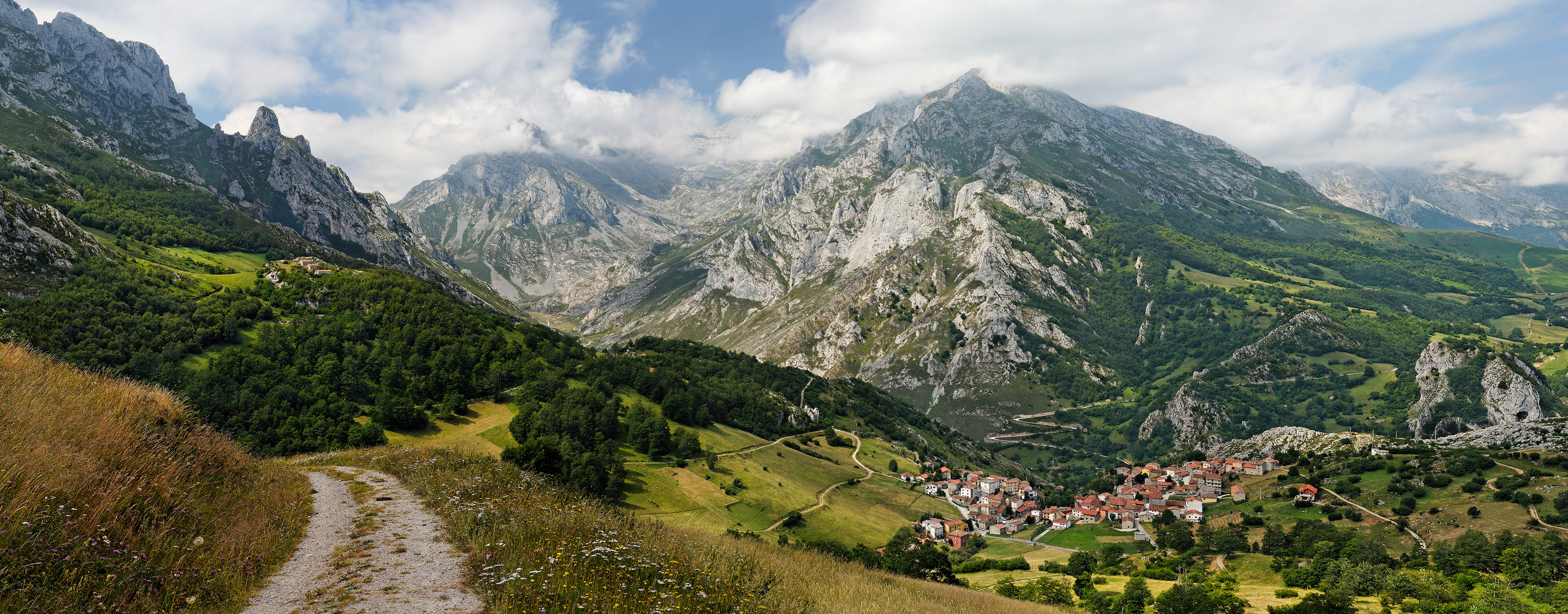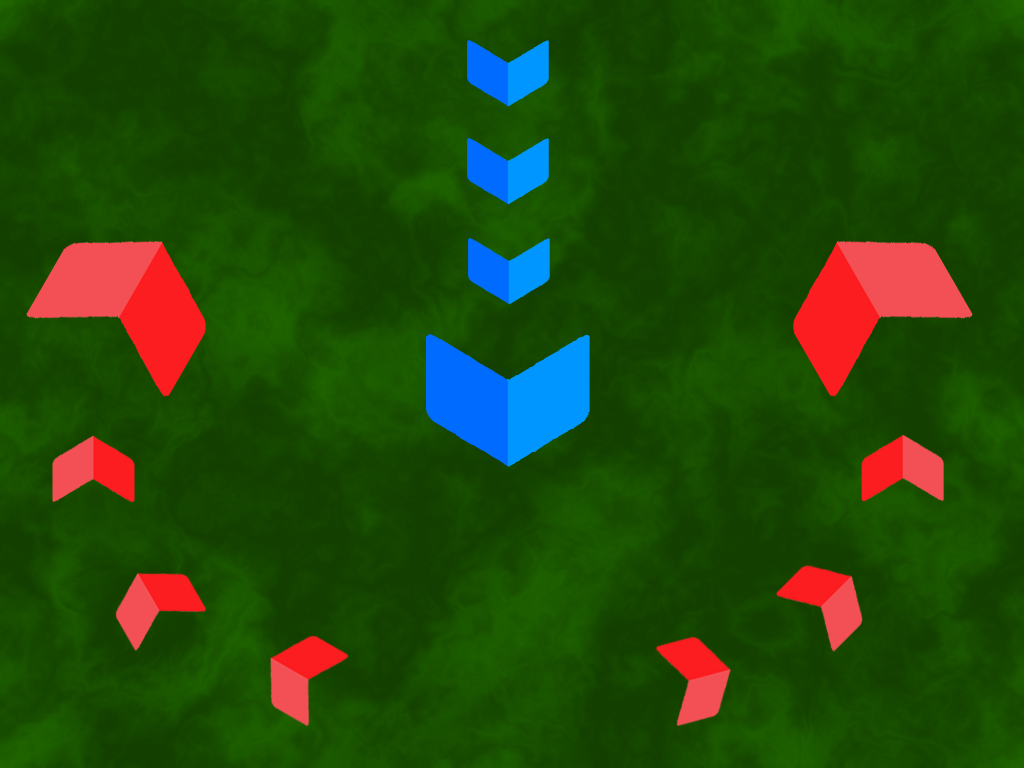|
Battle Of El Mazuco
The Battle of El Mazuco was fought between 6 and 22 September 1937, between the Republican and Nationalist armies during the Spanish Civil War as a part of the War in the North campaign. The Republican defence of El Mazuco and the surrounding mountains halted the Nationalist advance into eastern Asturias, despite their forces being outnumbered sevenfold. After weeks of intense fighting over extreme terrain the defenders were eventually overwhelmed, and the Nationalists were then able to link up with their forces advancing from León, leading to the fall of Gijón and the abandonment of Asturias, the last Republican province in North-West Spain. This battle was almost certainly the first use of carpet bombing against a military target. Prelude Following the fall of Bilbao and the defeat of the Republican forces defending Santander, the Republican stronghold of Asturias was isolated from the Republican armies in the south and east of Spain. The leader of the Nationalist forces ... [...More Info...] [...Related Items...] OR: [Wikipedia] [Google] [Baidu] |
Asturias Offensive
The Asturias Offensive ( es, Ofensiva de Asturias) was an offensive in Asturias during the Spanish Civil War which lasted from 1 September to 21 October 1937. 45,000 men of the Spanish Republican Army met 90,000 men of the Nationalist forces. Background After the failed Republican offensive against Zaragoza, the Nationalists decided to redeploy their forces and continued their offensive against the last piece of Republican-held territory in the North, Asturias. On 29 August, the Sovereign Council of Asturias, led by Belarmino Tomas, assumed all military and civil powers and appointed Colonel Prada as commander of the Republican Army of the North. Opposing forces The Nationalist offensive was launched by General Dávila's Army of the North, with 80,000 men. This force included José Solchaga's four Navarrese brigades, Aranda's three divisions and the Italian '' CTV''. The Nationalists also had 250 cannons and 250 aircraft. Opposing them, the Republicans had the Army of the ... [...More Info...] [...Related Items...] OR: [Wikipedia] [Google] [Baidu] |
Meré
Meré is a village (and also a parroquia) in the concejo of Llanes, in Asturias. Its population in 2004 was 175, in 84 dwellings. It is located on the banks of the ''Ríu de las Cabras'' at , which is 28 km from Llanes and about midway between Posada and Benia. It can also be reached from Llanes by taking the road that passes El Mazuco. During and after the Battle of El Mazuco in 1937 it was the headquarters of the Republican forces; see ''El Mazuco (La defensa imposible)''.English translation 2004–2005.) Almost the entire village was burned to the ground during the war, and had to be rebuilt. However, the ''Palacio de Meré'' survived; it was built in the 18th century alongside a smaller and older building. Meré's main Fiesta is on 31 October; Nuestra Señora del Rosario. References See also * Méré (other) * Mere (other), a lake, or a place in England. Parishes in Llanes {{Asturias-geo-stub ... [...More Info...] [...Related Items...] OR: [Wikipedia] [Google] [Baidu] |
Spanish Cruiser Almirante Cervera
''Almirante Cervera'' was a light cruiser and lead ship of the of the Spanish Navy. She was named after the Spanish admiral Pascual Cervera y Topete, commander of the Spanish naval forces in Cuba during the Spanish–American War. She was part of the Spanish Republican Navy between 1931 and 1936, year in which she became a key player of the Nationalist Fleet in the Spanish Civil War. Features Her construction was authorized by the so-called Miranda law of 17 February 1915. The cruiser was launched in Ferrol in 1925 and scrapped in 1965. The ship was in length, in beam, and a draught of . Equipped with a main armament of eight guns of , mounted in three twin turrets and two single mountings, and crewed by a complement of 566, ''Almirante Cervera'' belonged to the same class of two other cruisers of the Spanish Navy of her time, ''Galicia'' (''Libertad'' from 1931 to 1939) and ''Miguel de Cervantes''. Operational history Civil War Blockade of Northern Spain Starting in Octobe ... [...More Info...] [...Related Items...] OR: [Wikipedia] [Google] [Baidu] |
Cabrales
Cabrales is a municipality in the autonomous community of Asturias, northwestern Spain. It is situated between the Sierra de Cuera and the Picos de Europa, and is a region famous for its Cabrales cheese. Important towns within the municipality include Arenas de Cabrales, one of the primary objectives of the Battle of El Mazuco in 1937. Nowadays Arenas' economy seems to be primarily based on tourism, although unlike many tourist centres it retains its authentic style – and hospitality. Parishes Cabrales municipality is divided into nine parishes: * Berodia * Bulnes *Carreña *Las Arenas * Poo *Prado (Prau in Asturian) * Puertas *Sotres Sotres is a village and parish in the Asturian municipality of Cabrales, in Spain, located 19 km from Carreña, the municipal capital, in the eastern extreme of the province. The highest of all villages in the Picos de Europa National Park ... * Tielve References Municipalities in Asturias Picos de Europa * { ... [...More Info...] [...Related Items...] OR: [Wikipedia] [Google] [Baidu] |
Panes, Asturias
Panes is one of eight parishes (administrative divisions) in Peñamellera Baja, a municipality within the province and autonomous community of Asturias, in northern Spain , image_flag = Bandera de España.svg , image_coat = Escudo de España (mazonado).svg , national_motto = ''Plus ultra'' (Latin)(English: "Further Beyond") , national_anthem = (English: "Royal March") , i .... The population is 568INE2011). The Bowling Museum of Asturias is located in the parish. Parishes in Peñamellera Baja {{asturias-geo-stub ... [...More Info...] [...Related Items...] OR: [Wikipedia] [Google] [Baidu] |
Cares
The Cares is a river in Northern Spain that flows through the autonomous communities of Asturias and León until it joins the Deva River and flows into the Atlantic Ocean at the Bay of Biscay. It forms the Tina Mayor estuary, the natural border between Asturias and Cantabria. The Cares is known because of the narrow and spectacular canyon it forms when passing the Picos de Europa. A trekking path, " Ruta del Cares", runs along the river. The stream is also known for the quality of its salmon. The Cares river is joined by de Deva river. Many companies rent kayaks to descend both rivers. Kayaking is popular here during the summer. See also * List of rivers of Spain This is an incomplete list of rivers that are at least partially in Spain. The rivers flowing into the sea are sorted along the coast. Rivers flowing into other rivers are listed by the rivers they flow into. Rivers in the mainland Iberian Peninsu ... External links The Cares Route, Official Page in EnglishCa ... [...More Info...] [...Related Items...] OR: [Wikipedia] [Google] [Baidu] |
Pincer Movement
The pincer movement, or double envelopment, is a military maneuver in which forces simultaneously attack both flanks (sides) of an enemy formation. This classic maneuver holds an important foothold throughout the history of warfare. The pincer movement typically occurs when opposing forces advance towards the center of an army that responds by moving its outside forces to the enemy's flanks to surround it. At the same time, a second layer of pincers may attack the more distant flanks to keep reinforcements from the target units. Description A full pincer movement leads to the attacking army facing the enemy in front, on both flanks, and in the rear. If attacking pincers link up in the enemy's rear, the enemy is encircled. Such battles often end in surrendering or destroying the enemy force, but the encircled force can try to break out. They can attack the encirclement from the inside to escape, or a friendly external force can attack from the outside to open an escape rout ... [...More Info...] [...Related Items...] OR: [Wikipedia] [Google] [Baidu] |
Deva Gorge
Deva may refer to: Entertainment * ''Deva'' (1989 film), a 1989 Kannada film * ''Deva'' (1995 film), a 1995 Tamil film * ''Deva'' (2002 film), a 2002 Bengali film * Deva (2007 Telugu film) * ''Deva'' (2017 film), a 2017 Marathi film * Deva (''Dungeons & Dragons''), a type of angel * Devas, characters in ''Digimon Tamers'' People Given name * Deva (composer) (born 1950), Indian film composer and singer * Дeva (Deva) (born 2000), Hungarian singer-songwriter * Deva Bandhumasena (1891–1944), Thai military officer * Deva Katta, Indian-born American citizen filmmaker * Deva Mahal, soul and R&B singer in New York * Deva Mahenra (born 1990), actor, model and presenter from Indonesia * Deva Premal (born 1970), German musician * Deva Raya II (died 1446), emperor of the Vijayanagara Empire * Santos Souza Delvanita (commonly known as Deva; born 1989), Brazilian footballer Surname * A. N. Prabhu Deva, Indian academic * Bhattakalanka Deva (fl. 1604), Kannada grammarian * Deva Dass ... [...More Info...] [...Related Items...] OR: [Wikipedia] [Google] [Baidu] |
Sierra De Cuera
Sierra de Cuera ( ast, Sierra del Cuera), is a 30 km long mountain chain of the Cantabrian Mountains. The ridge's highest point is Pico Turbina (1315 m). This mountain range is located at 6 km from the sea and runs parallel to the coast. It lies within the Cabrales, Llanes, Peñamellera Alta, Peñamellera Baja and Ribadedeva municipal terms. Recent history The mountains of the Sierra de Cuera were vital to the defence of Asturias during the Spanish Civil War (1936 - 1939) and the key to the Sierra de Cuera was the pass of El Mazuco. Following the fall of Bilbao the troops supporting General Franco's rebellion tried to advance by clearing the Republican defenders from these mountains. In order to do this they planned a pincer movement moving south-west from Llanes and west, along the Río Cares, from Panes towards Cabrales. On both fronts, however, the rugged terrain and the stiff resistance of the Republican loyalists halted the advance during what became known as the Bat ... [...More Info...] [...Related Items...] OR: [Wikipedia] [Google] [Baidu] |
Deva River
The Deva is a river in Northern Spain, flowing through the Autonomous Communities of Cantabria and Asturias until it flows into Tina Mayor, an estuary. Its main tributaries are the Cares and Urdón rivers, among others. Deva is the name of a Celtic goddess related to the waters. As the names of the English rivers Dee, which are related, this may come from the Proto-Indo-European '' *deiueh2-'', meaning 'a goddess'. See also * List of rivers of Spain This is an incomplete list of rivers that are at least partially in Spain. The rivers flowing into the sea are sorted along the coast. Rivers flowing into other rivers are listed by the rivers they flow into. Rivers in the mainland Iberian Peninsu ... Rivers of Spain Rivers of Cantabria Rivers of Asturias Picos de Europa {{Spain-river-stub ... [...More Info...] [...Related Items...] OR: [Wikipedia] [Google] [Baidu] |
Fidel Dávila Arrondo
Fidel Dávila Arrondo (24 April 1878 – 22 March 1962) was a Spanish Army officer during the Spanish Civil War. Born in Barcelona, as an infantry officer, he fought in Cuba during the Spanish–American War and received the Cruz del Mérito Militar. He later entered the General Staff of the Army. He was then promoted to lieutenant colonel and assigned to Spanish Morocco. In 1929 he was promoted to brigadier general and was assigned to the VII Military district. During the military reforms of Prime Minister Manuel Azaña, he solicited permission to go into the reserves and settled down in Burgos, from where he participated in the military conspiracy to overthrow the Popular Front (Spain), Popular Front government. On the night of the July 18–19, 1936 he seized the civil government of Burgos. He was a member of the ''National Defense Junta, Junta de Defensa Nacional'' and president of the ''Junta Técnica del Estado'', the core of the future national government, as well as chief ... [...More Info...] [...Related Items...] OR: [Wikipedia] [Google] [Baidu] |
.jpg)



